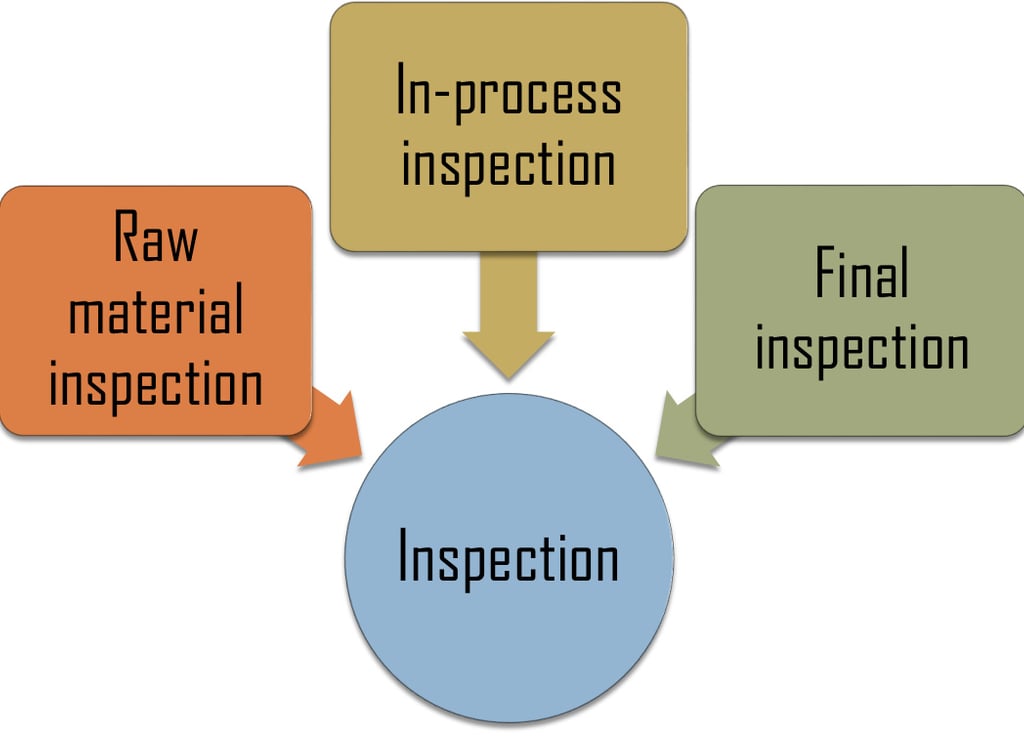What quality control measures do you provide when sourcing from China?
Sourcing Expert Allen Zeng
10/3/20254 min read


Ensuring the quality of products when sourcing from China is crucial for businesses aiming to maintain high standards and avoid costly mistakes. As a sourcing agent, I know that the right quality control (QC) measures can make a significant difference between a successful order and a costly failure. Let’s dive into how quality control works when sourcing from China.
Quality control is key to ensuring that the products sourced from Chinese suppliers meet your required standards. A comprehensive QC process includes pre-production checks, in-process monitoring, third-party inspections, and post-production evaluations. It helps businesses mitigate risks, improve product reliability, and ultimately enhance customer satisfaction.
Quality control is not just about checking products at the end of the manufacturing process. It's a continuous process that starts from the moment a supplier is chosen and continues throughout production. This ensures that everything from raw materials to the finished product meets your expectations.
How do you ensure products meet quality standards before shipment?
When sourcing from China, ensuring products meet quality standards before shipment is a priority. Pre-production and in-process inspections help to identify potential issues early.
Before shipment, several quality control measures are put in place to verify the consistency and accuracy of your product. Pre-shipment inspections are a standard practice to ensure your products match your specifications and quality standards.
Pre-production inspections
These inspections occur before manufacturing begins. They typically include verifying the quality of raw materials and checking that the supplier's production facilities are ready. This step helps reduce the risk of defects later in the production process.
In-process inspections
While products are being manufactured, in-process quality control (IPQC) plays a vital role in identifying issues early. Regular checks ensure that materials and production methods are in line with quality expectations. A consistent process leads to fewer mistakes and more predictable results.
Final product inspection
Finally, a pre-shipment inspection is conducted where the finished products are inspected for defects, packaging errors, and conformity to the original order. The inspection also checks that labeling, packaging, and barcodes are correct. Ensuring the final product is up to standard before shipment saves both time and money by reducing returns and customer complaints.
Can you perform third-party inspections?
Third-party inspections are a critical part of the quality control process when sourcing from China. Using an independent inspection service adds another layer of objectivity to the inspection process.
Yes, third-party inspections can be arranged to verify product quality, especially for complex or high-value items. These inspections ensure that products meet your specifications and international standards. Third-party inspectors are often certified to perform specific tests, giving you more confidence in the results.
Why third-party inspections are essential
Third-party inspectors are objective, unbiased, and experienced in identifying issues that may be missed by internal teams or the suppliers themselves. They can check product quality, dimensions, material quality, and even ensure compliance with international standards like CE, RoHS, or FDA certifications.
Types of third-party inspections
Initial Product Inspection: This involves verifying that the production process and materials are suitable before full-scale manufacturing begins.
During Production Inspection (DUPRO): This helps detect defects before the products are completed, reducing the chances of large batches being defective.
Pre-shipment Inspection: A final check before the products are shipped to confirm that they meet agreed-upon specifications and are free of defects.
Using third-party inspection services gives an added layer of security and reduces the risks associated with international trade.
How do you handle defective products?
Handling defective products is a crucial aspect of China sourcing. Implementing a clear process for managing defective products ensures that any issues are addressed quickly and effectively.
When a defective product is identified, it’s essential to follow a structured approach. First, we assess the nature of the defect, report it to the supplier, and decide on corrective actions. Clear communication with suppliers and setting expectations upfront are key steps in managing defective products.
Step 1: Identifying and reporting defects
The first step is identifying the defects and providing clear documentation. Whether it’s photographs or videos, suppliers need to see exactly what went wrong so that they can take corrective actions.
Step 2: Corrective action plan
Once a defect is identified, a corrective action plan (CAP) is created. This plan outlines how the issue will be fixed and what steps will be taken to prevent future occurrences. A corrective action plan may include:
Adjusting the production process
Retesting the batch
Training workers on proper procedures
Step 3: Returns and refunds
For defective products, a return, replacement, or refund process should be in place. Many suppliers offer a warranty or returns policy, and it’s important to negotiate these terms before placing an order. If a product is deemed defective, the supplier should be responsible for the return shipping costs and any additional costs associated with replacing or fixing the product.
What steps do you take to prevent quality issues in the first place?
Preventing quality issues from occurring in the first place is the ultimate goal of any sourcing process. By implementing a strong quality control system, businesses can avoid the costly problems associated with defective products.
To prevent quality issues, it’s important to establish clear expectations with suppliers and set up robust quality control processes before production begins. Preventative measures like supplier audits, setting clear quality standards, and constant communication can drastically reduce the likelihood of defects.
1. Supplier selection and audits
Choosing the right supplier is the first step in ensuring quality. We perform thorough supplier verification to ensure they have the necessary certifications and a proven track record of delivering high-quality products. Supplier audits allow us to assess their production capabilities, quality control processes, and ability to meet deadlines.
2. Quality standards and clear communication
Establishing clear product specifications and quality standards is key to preventing issues. Providing suppliers with detailed drawings, materials lists, and quality benchmarks helps ensure they understand the exact requirements. Setting quality expectations upfront ensures that there is no ambiguity in the final product.
3. Continuous monitoring and process improvements
We don’t just inspect products at the end of production; we monitor the entire process to ensure quality at every stage. Regular checks and performance reviews of suppliers help identify any potential issues before they become larger problems. Additionally, we work with suppliers to improve their processes over time through feedback and collaboration.
In summary, effective quality control is essential when sourcing from China. By using pre-production inspections, in-process monitoring, third-party testing, and a structured approach to defect management, businesses can ensure they receive high-quality products. Implementing preventative measures and maintaining strong relationships with suppliers helps minimize risks and ensures the success of your sourcing strategy.
Connect Us
Great partnerships start with a simple hello.
Quick chat
Explore
© 2025. All rights reserved.












